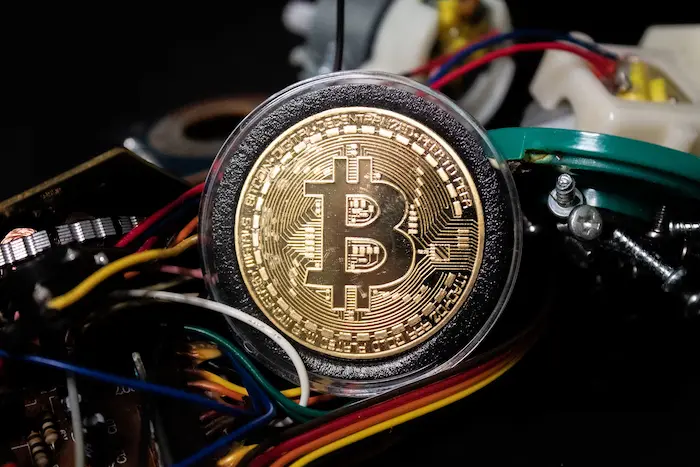
Bitcoin is a decentralized digital currency that allows peer-to-peer transactions without the need for a central authority. At the heart of Bitcoin’s infrastructure lies the process of Bitcoin mining, through which transactions are validated and the network secured. In return, miners earn newly created bitcoins along with transaction fees as a reward. In this article, we explain what mining bitcoins is and how it enables trustless, borderless value transfer on the world’s most robust public blockchain.
The Basics of Bitcoin Mining
Mining bitcoins is the backbone that powers the Bitcoin network. In simple terms, Bitcoin miners use specialized hardware to solve complex cryptographic puzzles that validate groups of transactions and add new blocks to the blockchain.
By expending computational effort to secure the network, miners earn the right to collect newly minted bitcoins and transaction fees as incentives. This process of repeatedly solving puzzles that get increasingly difficult and require tremendous computing power is referred to as the proof-of-work (PoW) consensus algorithm.
Generating Hashes: The Mining Puzzle
The cryptographic puzzles that miners compete to solve involve producing valid hashes of the blocks of transactions. Bitcoin utilizes the SHA-256 hashing algorithm to generate hashes. Miners assemble newly announced transactions into candidate blocks, alter one small component called a “nonce value,” and then calculate the hash.
Only if the output hash begins with a specified number of zeroes is it considered a valid result that the network will accept. Finding such a hash is essentially guesswork, requiring trillions of computations per second across the global mining network before one miner guesses the lucky nonce value.
The Difficulty Adjustment
Bitcoin is programmed to adjust the difficulty of the mining algorithms automatically to constrain the average time for each block to be added to the blockchain to 10 minutes, no matter the computing power employed. The network does this by adjusting the target value that hashes must be lower than to qualify. As more miners contribute more computational resources, the higher the difficult gets to maintain this 10-minute pace.
Mining Hardware and Pools
- In Bitcoin’s early days, miners could find valid hashes using regular central processing units (CPUs).
- As competition grew, graphic cards (GPUs) offered far better performance.
- Soon enough, application-specific integrated circuits (ASICs) were designed solely for Bitcoin mining and offered vastly higher hash rates.
Individual miners can now join forces and split rewards in mining pools. Rather than solo mine with lower and inconsistent odds of earning block rewards, pooling resources increases the collective probability of solving hashes first.
The Mining Process
During mining, nodes on the network race to package transactions into candidate blocks with varying nonce values. Using specialized hardware, they perform billions of calculations per second in search of valid hashes below the target. With luck and computational resources, one miner finally announces a candidate block with a hash satisfying the difficulty criteria. Once verified by other nodes, this block gets appended to the existing blockchain, and the miner is rewarded with newly minted bitcoins and transaction fees. The discovery of this “golden hash” restarts the race.
Confirming Transactions
For a transaction to finalize, it must be included in a block and added to the blockchain. With each subsequent block mined on top of it, the transaction gets further confirmation on the network. The industry standard is six confirmations until full trust is conferred in a transaction. If a payment gets included in an earlier block, six new blocks would need to be mined after it to consider that transaction settled. This layered security is why waiting for confirmation is key to using Bitcoin properly.
Bitcoin Mining Rewards
Bitcoin miners are currently awarded 6.25 newly minted bitcoins whenever they add a new block to the blockchain ledger. This fixed block reward gets cut in half every 210,000 blocks, an event known as Bitcoin halvings. In addition to newly minted coins, miners earn fees attached to transactions by users. As the halvings continue decreasing block rewards over time, miner revenue will mainly come via fees in the long run. These economic incentives are key for miners to keep participating in the validation system.
Challenges and Environmental Concerns
Bitcoin mining involves serious computing power which translates into intensive energy consumption. As miners scale up operations to increase profits, environmentalists have raised concerns over mining’s carbon footprint and electronic waste generation from specialized hardware. Efforts are underway to switch mining to cleaner renewable energy sources and more energy-efficient hardware designs in the future. Nonetheless, sustainable mining remains an area requiring continuous improvements across the industry.
Closing Thoughts
Bitcoin mining forms the building block of the Bitcoin network by enabling a decentralized system to validate transactions without the need for intermediaries. While mining faces challenges around energy use and hardware waste, miners play an indispensable role in securing the network and enabling the censorship-free, borderless transfer of value for users worldwide. Understanding the technical details behind mining provides critical insight into the inner workings of Bitcoin as a revolutionary financial technology.







